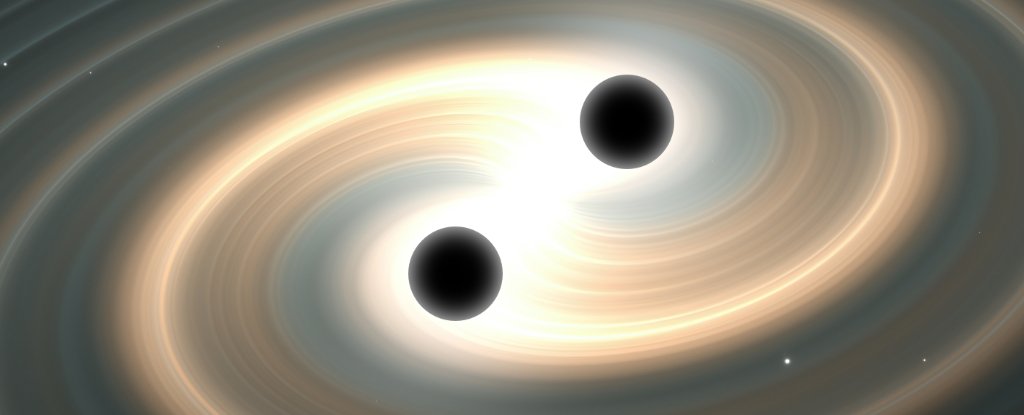Gravitational waves have been a hot topic in the world of astrophysics, and recent findings from the largest gravitational wave detector ever built have confirmed some exciting discoveries. The fabric of the Universe is constantly vibrating, and this cosmic rumble is likely caused by the collisions of massive black holes at the centers of galaxies.
The results from this groundbreaking detector, made up of rapidly spinning neutron stars scattered throughout the galaxy, have revealed that the gravitational wave background is even more pronounced than previously thought. Detailed maps of gravitational waves across the sky have been created, uncovering a fascinating “hot spot” of activity in the Southern Hemisphere.
Published in three papers in the Monthly Notices of the Royal Astronomical Society, this research sheds light on the nature of gravitational waves. These ripples in space and time are generated when dense and massive objects, such as black holes, orbit or collide with each other. The most powerful waves are emitted by the largest black holes, making them a key target for study.
One of the primary challenges in studying black holes is their elusive nature, but gravitational waves offer a unique window into their behavior. By observing the interactions of supermassive black holes during galactic mergers, astronomers can glean valuable insights into these cosmic giants. Pulsars, dense neutron stars that emit radiation in precise pulses, play a crucial role in detecting gravitational waves.
The MeerKAT Pulsar Timing Array, the largest galactic-scale gravitational wave detector, has provided further evidence of low-frequency gravitational waves. These findings suggest a more active universe than previously anticipated, raising questions about the prevalence of supermassive black holes in the cosmos. By meticulously mapping the gravitational wave background, researchers are gaining a deeper understanding of the cosmic architecture of our Universe.
The use of the MeerKAT radio telescope in South Africa has been instrumental in detecting the gravitational wave background with unprecedented sensitivity. The discovery of a powerful pattern associated with gravitational waves has opened up new avenues for exploration, hinting at the presence of additional supermassive black holes in the Universe.
The detailed maps of the gravitational wave background have revealed a surprising hot spot of activity in the Southern Hemisphere sky. While further research is needed to confirm these findings, the potential implications for our understanding of the Universe are profound. By collaborating with international partners through the International Pulsar Timing Array, researchers hope to validate and expand upon these exciting discoveries.
In conclusion, the study of gravitational waves continues to push the boundaries of our knowledge of the cosmos. With cutting-edge technology and innovative research methods, scientists are unraveling the mysteries of the Universe one gravitational wave at a time.
By Matthew Miles, Postdoctoral Researcher in Astrophysics, Swinburne University of Technology and Rowina Nathan, Astrophysicist, Monash University
This article is republished from The Conversation under a Creative Commons license. Read the original article.

